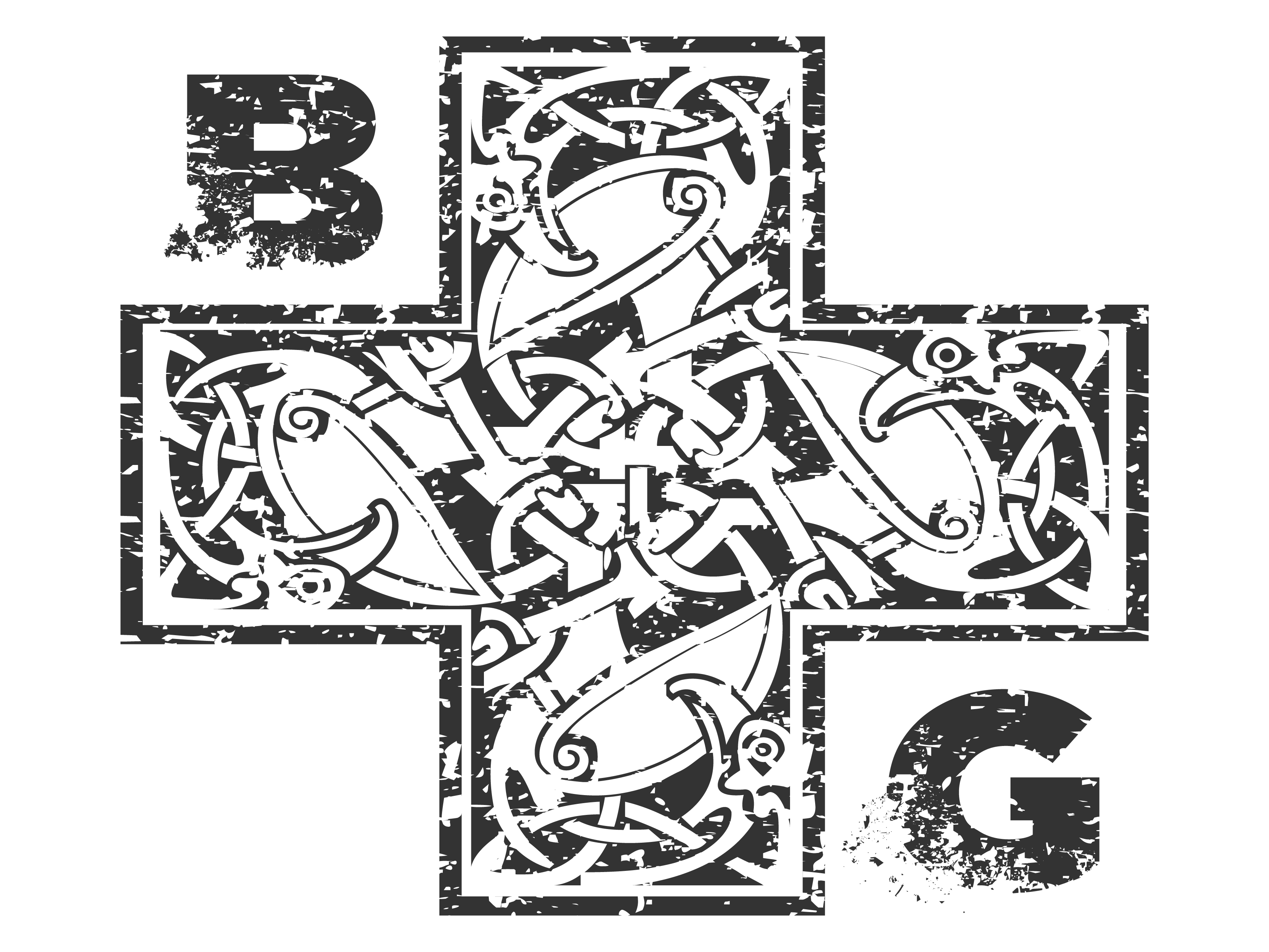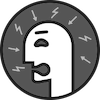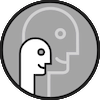Discover God’s Ways:
Introduction
In an online exclusive, we are proud to present the first chapter in unabridged form.
Download the Introduction as a PDF
*
INTRODUCTION
There are basic patterns to the way God works in a human life. I call them the “ways of God” and they should be obvious, but they’re not. It should be fairly simple and clear, but most believers don’t know what God is actually up to with human beings. His purpose is hiding in plain sight. It’s the treasure hidden in a field that ought to be findable by everyone who wants to know.
I should know. I was one of those believers who had no real clue as to what God was really trying to do in me and in others.
What I’ve discovered, as I have surveyed the landscape of spiritual formation (my own experience and others’), is a set of basic interwoven or interlinked patterns, “ways,” that human beings relate to God. I’m going to describe what I see to be the six “ways of God” and how they interconnect to each other. Actually, all the Ways are potentially present for every human being at all times, as possibilities of how an individual could relate to God, but as a person’s life progresses some become more and more difficult to access and that is both a gracious gift and, for some, many perhaps, a sad result. As we grow closer to our gracious God some things, specifically basic behaviors, beliefs, and ideas in relation to him or to other humans become gradually harder and harder to practice or avoid and others become, simultaneously, easier or at least more normal for us. This means that we can grow to the point where old habits (of sin, of fearfulness and so on) will simply have no attraction for us anymore. It will become more and more normal to be with God more and more in your everyday life. Thanking him, serving him, seeing what he sees and doing what he does, being patient with him–and here I mean learning to practice his kind of patience with yourself and others–all this will seem, gradually, more and more normal. It will become hard for you to understand how you used to live otherwise.
Spiritual Formation is not a smooth linear pathway of growth from A to B to C. Although there is a basic movement toward God that God wants and promotes, a minority actually start at “A” and progress to “Z” with God. What I have seen is people, myself included, who cycle up and then down or backwards and then forwards because we get stuck in dark places and can stay there for some time until we grow or learn or surrender or learn to rejoice and be obedient. That was my life before opening up to Jesus. But then this pattern has also characterized large swaths of my life with Jesus since those early days. I will call these the Way of Pain and the Way of Poverty. I am not immune to the experience of the Way of Pain nor have I fully risen above what I will describe as the Way of Poverty. But there are other ways I am with God that now “use” Pain and Poverty for a purpose that I no longer run from. But this life with God is full of surprises. With little or no Purity, or so it seems, we can be catapulted to the top, have access to God’s Way of Power and be in the Way of Partnership, have amazing experiences of God’s presence in our lives and be unbelievably fruitful only to have it all crash to the ground. That’s happened to me more than once and you see it again and again in both the Bible and in the history of God’s people. This book is my first attempt to try to pull together all the biblical witness, all the historical witness in the life of God’s people and all the multiple and varied ways I’ve witnessed God work in others’ and in my own experience of him. This ought to be easy, right? And I’m going to do this without making this book into a dry detailed heavily footnoted academic opus (that’s Latin for “long and boring”). This book will be based, as much as I can pull it off, on experience, my own and the experiences of others in the Bible and in church history. I write this book to; 1. explain in simple direct ways what God is up to from the “below” perspective of typical human lives as real humans see it and live it and 2. help you, the reader, locate yourself, your experience, where you are with God, and finally, 3. give you some practical tools, practices, warnings and encouragement so you can continue on the way with our good good God.
The “way of God” is most of all about His Presence. God’s Presence is Him, His life, and the center of all life. The Scriptures tell us that all of creation is bathed in God’s Presence. So can, and ought to be, every human life. His Presence is so good because God himself is so good!
This “way of God” is a “way” in two senses, both of which show up not only in English, but in one of the original languages of the Bible, Hebrew. First, the “way of God” comes close to what we mean when we say we’re “on the way.” When we’re “on the way,” it means that we’ve started a trip to somewhere. Being “on the way of God” means that you have started out on a journey to God, to being closer to Him. Of course, the “way of God” is not a trip of a few minutes, days, or even months—it’s a lifelong journey that changes you deep down. )
In the movie Wild, Reese Witherspoon plays Cheryl, a young woman who is, in one sense, out on a long hiking trip, but on a deeper level is on a journey to find herself. (Cheryl Strayed is an actual person— the movie Wild is based on a book Cheryl wrote.) Cheryl isn’t just backpacking north from the Mojave desert to the Oregon-Washington state border. Cheryl discovers who she is and goes through a life transformation in the process of hiking a long section of the Pacific Crest Trail.
The “way of God” is that kind of a journey. It is a long-term, ongoing discovery of who God is, and, in the process, a long-term discovery of who you are, who you are becoming, and who God means you to be.
Besides a journey on the “way of God” there is another, related understanding of the “way of God” that has to do more with way as habit or approach. Often, when I meet people, I get to describe my wife, Joanie. After describing the physical details—she’s 5 feet, 3 inches, has red hair, etc.—I usually end up mentioning something about her typical behavior. She loves to hike, run, play with our dog, love on people others would probably neglect, and so on. What I’m describing is her “way.” It’s what we’re talking about when we say of someone, “That’s her way.” This is the other, related meaning of “the way of God.” God’s “way” is His typical behavior with us humans. His “way” is good, wise, breathtaking, fair, right, appropriate, loving, sometimes confrontational, but always patient.
The “way to” God and the “way of” God converge in the way we follow and experience Him, in the way we relate to Him and He relates to us. It’s important to recognize that there are generally two basic patterns of relating to God. First, there is the way God intended to and still intends to relate to us and us to Him. He wants us to know Him as Friend, Confidant, Coach, Rescuer, and Partner, Master and Lord among others. You’ll see more good stuff like this later in the book. But then, there’s the not-so-good way we often, usually, or inevitably end up experiencing and relating to God—as the Ultimate Divine Bully, Super-OCD Demanding Legalist, and Unknowable Mystery Kill-Joy, among others. I’m going to talk about these too, because we all have lots of these deeply held, broken-shards-of-glass-in-your-bleeding-hand kinds of ideas and beliefs about God, and we have to deal with them. There is no middle ground with God, no neutral Switzerland where you can bank anonymously. God is the most unavoidable fact in the universe and in every human life. That’s just, ahem, the “way” it is.
Another central idea in this book, as I mentioned above, is that the way of God, God’s way with us, is something, sadly, “hidden in plain sight.” This way of God is seriously obvious, yet in my experience of walking this walk and teaching about it, I have come to realize that for the vast majority of Jesus followers it is not obvious. Nor, when I think back on it, was it all that obvious to me when I first began to follow Jesus. This book is an effort to address this sad and unnecessary problem. I will explain what God is up to in human life and lay out the basic aspects of God’s way so that anyone who desires to walk with Him can identify where he or she is on the way of God and see how to walk further with Him.
These basic aspects of God’s way fall under six headings: the Way of Pain, the Way of Poverty, the Way of Presence, the Way of Purity, the Way of Power, and the Way of Partnership. Each of these come back to and depend on the most basic truth of the triune God: His living, loving, beautiful, breathtaking, powerful, and awesome Presence. This Presence is at the center of the universe He created, and is at the center of all human life. This means that the other five ways of the Way of God are simply different aspects of the human experience of life lived in the unavoidable reality of His Presence.
Let me briefly introduce the six aspects of the Way of God and you’ll see how they relate to each other and to His Presence. I’ll work out the details of each aspect or “way” in the remainder of the book.
The Way of Pain
When an orchestra or a rock group plays well together, with every instrument and voice in tune and on time, they create a harmony of rhythm and sound. The instant one instrument is out of tune or plays the wrong note, however, the listener experiences an unpleasant dissonance. That dissonance is a kind of “pain.”
The Way of Pain is the experience of being out of harmony with God’s loving Presence. This includes pain that others have inflicted on us by not welcoming us (as they should) into their groups or friendship, and the pain we experience when others purposefully or unconsciously abuse us. This pain comes from outside as some kind of attack, or as a pulling away – others from us or us from others – that leaves us alone and lonely. But pain also comes from inside us—the deep, burning shame-pain of realizing how we have unconsciously or deliberately abused and used others, and that fearful pain that our behavior will become known and we will experience even more pain. There is also a deeper, often hidden, pain of depression, hopelessness, and aching despair that comes through experiences that tell us there is no ultimate purpose to our lives.
Pain is so common to the way humans “naturally” relate to God and each other that it actually seems “normal.” But the Way of Pain is intended to wake us up to what is abnormal about our normal. It is similar to when Neo, the main character in the film series The Matrix, makes the shocking discovery that what he had always taken to be the real world was a digital fake. He comes to realize that “normal life” has always been so disappointing and depressing to him because it is a virtual reality, and because he and most everyone else on the planet have been cut off from the real world. As the story plays out, Neo learns to live in the “real” world and operate in the digital, virtual world, where he becomes a kind of messiah figure.
The Matrix is an extended exploration of the idea that the problems in the visible world come from not knowing about and dealing with another hidden, “real” world. People suffer because, unconsciously and consciously, they feel there is a level of real life they are missing out on, a world they truly belong to but in which they can’t live. They sense they are homeless, but are never able to find their “real” home. This alienation is one aspect what I mean by the Way of Pain. Humans adapt to living in a foreign environment, but still feel the “pain” of not living in the “right” environment. We were made to live in the Presence, and we long for it without even knowing it’s that which our heart desires.
There are other aspects of the Way of Pain, such as the way humans try to manufacture something to fill the gaps felt by the lack of the Presence—everything from religion to drugs, weird sex, entertainment, and the “pleasure” of getting other people to do what you want (a.k.a. “worship” you). There are also the ways humans hurt each other because they feel the lack of the Presence.
The Way of Poverty
The Way of Poverty and the Way of Pain overlap each other. (In fact, all the ways in the Way of God overlap and co-define each other.) The Way of Poverty involves the experience of encountering someone or something that is “richer” than you. If we lived in a world where everyone had all the same stuff and abilities, we wouldn’t know the Way of Poverty. But it only takes one experience of being around someone who has some cool thing (e.g., the latest iPhone, snowboard, or Mini Cooper), some ability (sings, dances, or does math easily), or some attribute (prettier, cooler, more popular, or some “x” factor) you think you don’t have for you to experience a kind of poverty.
The Way of Poverty and the Way of the Presence overlap as well, for to experience God is to experience something incomparably “richer” than we are. The first experience of the Presence so often always leaves us feeling poor, and with the pain of knowing we’re poor. God, in the many ways He can be present to us, comes to us, and the experience is so sweet, so good, so overwhelming, so short in duration, so shocking, and so full of truth and goodness that it leaves us wanting more. At the same time, His Presence is often so scary, so confrontational, so unusual, so uncontrollable, and so wild that we aren’t sure we really want more. And yet we do. For an instant, sometimes longer, we are so rich in His Presence. Then He seems to disappear and we feel so poor. Having tasted the sweetest honey wine, plain tap water now seems flat, empty.
The Way of Presence
If the Way of Poverty is like the breathtaking (and terrifying) brush of a God-comet over the sky of your personal planet, then the Way of Presence is slower and lower. It’s part surrender ceremony and part discovery of a new continent you never knew existed. It is learning to deactivate the shields, to surrender and allow God to be present however He wants. It is to admit to the feelings and reality of the Ways of Pain and Poverty, as much as possible at any one time, and to purposefully begin to welcome and pursue the Presence.
Staying in the Presence is to become the new normal, though never tame or mundane. As living in the Presence becomes the focus for your life, you enter a cooler, gentler, and usually more sustainable kind of experience. You discover that while God is never totally absent, His presence with you is now at your invitation. To some degree, you set the pace of what happens. And what happens, amazingly enough, is an ascent out of the Ways of Pain and Poverty by going through them again and again and responding to what the Presence offers. This ascent is the Way of Purity.
The Way of Purity
In the Way of Purity, God uses the Ways of Pain and Poverty like a spade to break up rock-hard ground so it can finally grow good stuff. Or, to borrow a biblical metaphor, the Way of Purity is like a smelting furnace that burns the gold and silver free from the trash rocks in your life. Now, when you’re in the Presence, you don’t run from Pain and Poverty in shame and terror like you used to do. Instead, you’re learning that these former enemies have now become your allies, God’s tools or instruments to free you from the deeply encrusted beliefs you picked up in life and developed into your own private “shops of horrors.”
The Way of Purity focuses on setting you free from anything that would block or slow down your love for God, others, and yourself. In this Way, you learn to love yourself in and through the Presence. You learn to love with His love by being loved by His love. Forgiveness of self and others, and healing from broken habits of thinking and acting are at the center of what happens in the Way of Purity. The Way of Purity never ends in this life, and that’s one reason why this life will never be boring!
The Way of Power
In the Way of Power, you experience God’s own power come through you so that you love others in a way that produces effects way beyond what you would be able to pull off alone. God’s Way of Power has two interwoven parts to it: knowledge and action.
Knowledge is power. God knows a lot, and as you come to know Him better, He lets you in on what He knows. A huge part of how God heals and loves us is helping us know specific things about ourselves and others. This “insider” information unlocks false thought patterns that have held us captive. In the Way ofPower, God gives us hope and insight into what is going on so we can hold on and trust Him.
Where does this Way of Power come from? It comes from being “with” God. His knowledge and ability to make stuff happen are available to you because He is with you. It’s always His power, but part of the package deal of knowing God is that He lets you use it. The more you love and trust Him, the more His life, which is another way of talking about His power, is accessible to you. The love part is very important, because our love for God, fed by His incredible love for us, is like a set of secret lenses that lets us “see” stuff about x or y and then also actually do x or y.
Think of it like a phone app, if it’s helpful. There are apps that show you “augmented reality.” You hold your phone up, look through it, and get information about what you’re looking at that isn’t actually there on the street or in the sky. You can read about stuff for sale, restaurant ratings and offers, historical information, and so on. Being in God’s Presence is something like augmented reality. You know what’s really going on with situations and people that you otherwise would or could not know, which you can use to serve, set free, and love others.
The Way of Power also leads you into doing stuff you would not be able to do on your own—heal people from all kinds of illnesses, conditions, and accidents, multiply food, talk to and tame wild animals, bring rain or stop it, bring down fire from heaven, speak to and deeply impact people, individuals and crowds, move mountains (just figuratively this is pretty amazing), split open bodies of water…and even raise the dead (gulp!).
The Way of Partnership
Not every Way of Power appeals to, or is suitable for, everyone. This is where the Way of Partnership comes in. God is most interested in setting you free and setting you up to be His Partner. From His first interactions with His human creations, God has always been about making people fit to be His “partners in business.” What we know about God from the Bible and from the collective experience of believers through the centuries is that God Himself is a kind of three-way partnership, a community of three that is one. So it fits perfectly with God’s own nature that He would somehow include others into His beloved community. This is what the Bible calls becoming a child of God— you share in the family business!
One size does not fit all, but some size will fit everyone. Just as there is virtually endless variety in the natural world, thousands of species of beetles, bushes, bacteria, and butterflies, so there is huge variety in the kinds of partnerships God promotes with His children. And this is the amazing part. You actually get to choose! Your life experiences, your responses to them, and your inborn physical and mental gifts are the “ground floor” upon which God’s invitation to partner with Him is based. But God allows you to choose and then train in the use of power-gift “combos,” exploring how you will serve Him in a life of love with all your creativity, growing experience, and passion.
Imagine what kinds of things you would want to do and what kind of person you would want to become for eternity if you partnered with God in His forever future! Yes, there is a certain amount of “wax on, wax off” work to develop any real capability, but God is looking for serious partners who will—with Him, in Him, and for Him—build for the kingdom of God.
Getting on the Way
Somewhere in what you’re read so far I hope you have thought, “Yeah, that makes sense of my life!” or “Ok, that’s where I am.” I also hope that what you’ve read has made you thirsty and hungry for more. God tantalizes us with breathtaking views of what could be, and I’m hoping that even in this introduction, God has awakened a desire to look more closely at where you are and look for where you want to go, who you want to be.
All of these ways apply to all of us—if we want God’s Way. However, this is not an A, B, C linear journey. It does not always happen that someone starts in the Way of Pain and then progresses, step by step, to the Way of Partnership. It’s more like one step forward, then two back, then jump way forward, then back again. But when you see the big picture of the Way of God, your life in Him, hopefully, will make a lot more sense. You’ll see the pattern. You’ll see where you are, and you’ll want more! So along with seeing where you are, I’ll show you some simple, practical things you can do to get unstuck from old ways that are blocking you, and move more purposefully and directly into the Way God is working in you right now.
An important note: Some of you may have run into ideas in this introduction that are new or even a bit strange to you. Perhaps you’re thinking, “Well, I don’t know about that. That sounds kind of odd to me.” For many followers of Jesus, if not most, church life and spiritual life often gets placed into one or more of the following spiritual “boxes,” many of which don’t connect up with other “boxes” in any kind of meaningful way. The “boxes” can be: “being baptized into Christ,” or “accepting Christ as your Savior,” “going to church,” “witnessing,” or “waiting for Jesus’ return,” “going to heaven when I die,” and, depending on the denomination or tradition in which one has been raised, “baptism in the Holy Spirit,” “speaking in tongues,” “signs and wonders,” “walking in the prophetic,” “living a life of holiness,” or “living in grace alone.”
These “boxes” are all valid ways of describing aspects of God’s way with us. But what if these are smaller puzzle pieces of a larger Something—a holistic, descriptive way to understand the life of a follower of Jesus that brings order and sense to the Way God works in the human heart? That’s what this book is about. Stay with me. You’re going to love the view!







Discussion